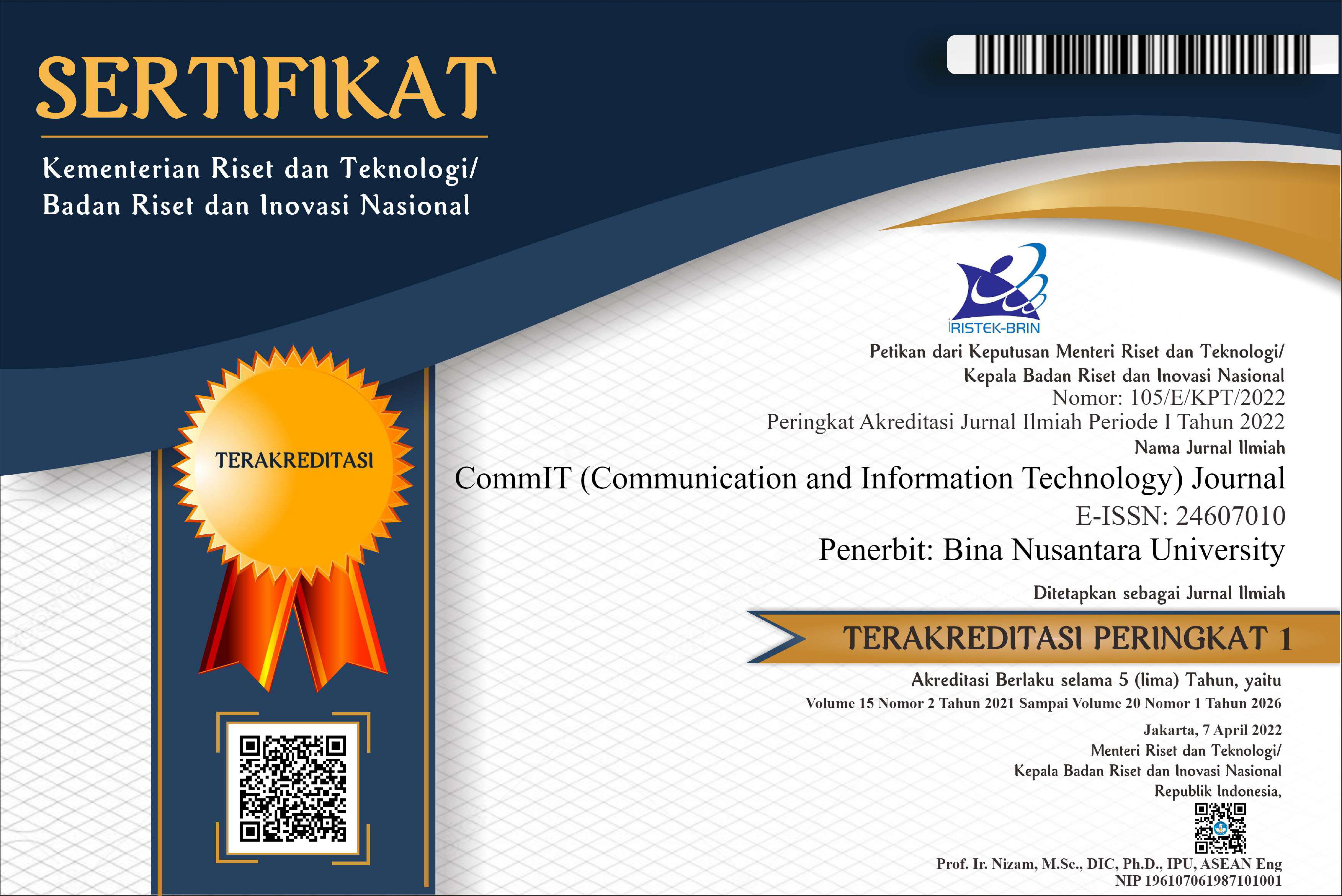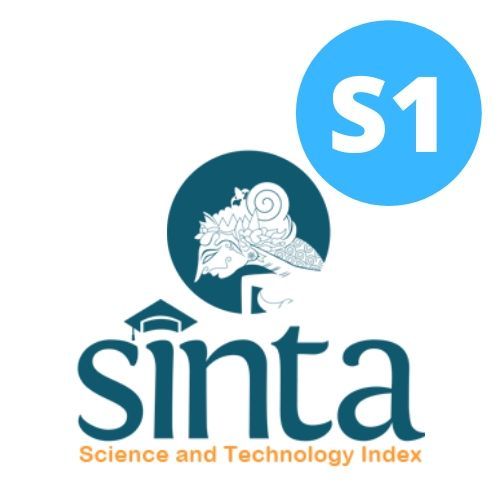Geometric Model for Human Body Orientation Classification
DOI:
https://doi.org/10.21512/commit.v9i1.1659Keywords:
Human Body Orientation, Histogram of Oriented Gradient, Local Binary Pattern, Geometric ModelAbstract
This paper proposes an approach for cal- culating and estimating human body orientation using geometric model. A novel framework integrating gradient shape and texture model of the human body orientation is proposed. The gradient is a natural way for describing the human shapes, while the texture explains the body characteristic. The framework is then combined with the random forest classifier to obtain a robust class differ- ence of the human body orientation. Experiments and comparison results are provided to show the advantages of our system over state-of-the-art. For both modeled and un-modeled gradient-texture features with random forest classifier, they achieve the highest accuracy on separating each human orientation class, respectively 56.9% and 67.3% for TUD-Stadtmitte dataset.
Plum Analytics
References
M. Andriluka, S. Roth, and B. Schiele, “Monocular 3D Pose Estimation and Tracking by Detection”, IEEE Conf. on Computer Vision and Pattern Recognition, pp. 623-630, 2010.
C. Weinrich, C. Vollmer, and H. Gross, “Estimation of human upper body orientation for mobile robotics using an SVM decision tree on monocular images”, Int. Conf. on Intelligent Robots and Systems, pp. 2147-2152, 2012.
C. Chen, A. Heili, and J. Odobez, “Combined estimation of location and body pose in surveillance video”, IEEE Conf. on Advanced Video and Signal-Based Surveillance, pp. 5-10, 2011.
I. Ardiyanto and J. Miura, “Partial Least Squares-based Human Upper Body Orientation Estimation with Combined Detection and Tracking”, Image and Vision Computing, vol. 32(11), pp. 904-915, 2014.
L. Wang, J. Shi, G. Song, and I. Shen, “Object Detection Combining Recognition and Segmentation”, Asian Conference on Computer Vision, pp. 189-199, 2007.
V. Ferrari, M. J. Marín-Jiménez, and A. Zisserman, “Progressive search space reduction for human pose estimation”, IEEE Conf. on Computer Vision and Pattern Recognition, pp. 1-8, 2008.
N. Dalal and B. Briggs, “Histograms of oriented gradients for human detection”, IEEE Conf. Computer Vision and Pattern Recognition, pp. 886-893, 2005.
Q. Zhu, S. Avidan, M.C. Yeh, and K.T. Cheng, “Fast Human Detection Using a Cascade of Histograms of Oriented Gradients”, IEEE Conf. on Computer Vision and Pattern Recognition, vol. 2, pp. 1491-1498, 2006.
T. Ojala, M. Pietikainen, and T. Maenpaa, “Multiresolution Gray-scale and Rotation Invariant Texture Classification with Local Binary Patterns”, IEEE Trans. on Pattern Analysis and Machine Intelligence, vol. 24, no. 7, pp. 971-987, 2002.
L. Breiman, “Random Forest,”Machine Learning, Vol. 45, pp. 5-32, 2001.
K. Crammer and Y. Singer, “On the Algorithmic Implementation of Multi-class SVMs”, Journal of Machine Learning Research, 2001.
D. Benbouzid, R. Busa-Fekete, N. Casagrande, F.D. Collin, and B. Kegl, “MultiBoost: a multi-purpose boosting package”, Journal of Machine Learning Research, vol. 13, pp. 549-553, 2012.
Downloads
Published
Issue
Section
License
Authors who publish with this journal agree to the following terms:
a. Authors retain copyright and grant the journal right of first publication with the work simultaneously licensed under a Creative Commons Attribution License - Share Alike that allows others to share the work with an acknowledgment of the work's authorship and initial publication in this journal.
b. Authors are able to enter into separate, additional contractual arrangements for the non-exclusive distribution of the journal's published version of the work (e.g., post it to an institutional repository or publish it in a book), with an acknowledgment of its initial publication in this journal.
c. Authors are permitted and encouraged to post their work online (e.g., in institutional repositories or on their website) prior to and during the submission process, as it can lead to productive exchanges, as well as earlier and greater citation of published work.
USER RIGHTS
All articles published Open Access will be immediately and permanently free for everyone to read and download. We are continuously working with our author communities to select the best choice of license options, currently being defined for this journal as follows: Creative Commons Attribution-Share Alike (CC BY-SA)




















